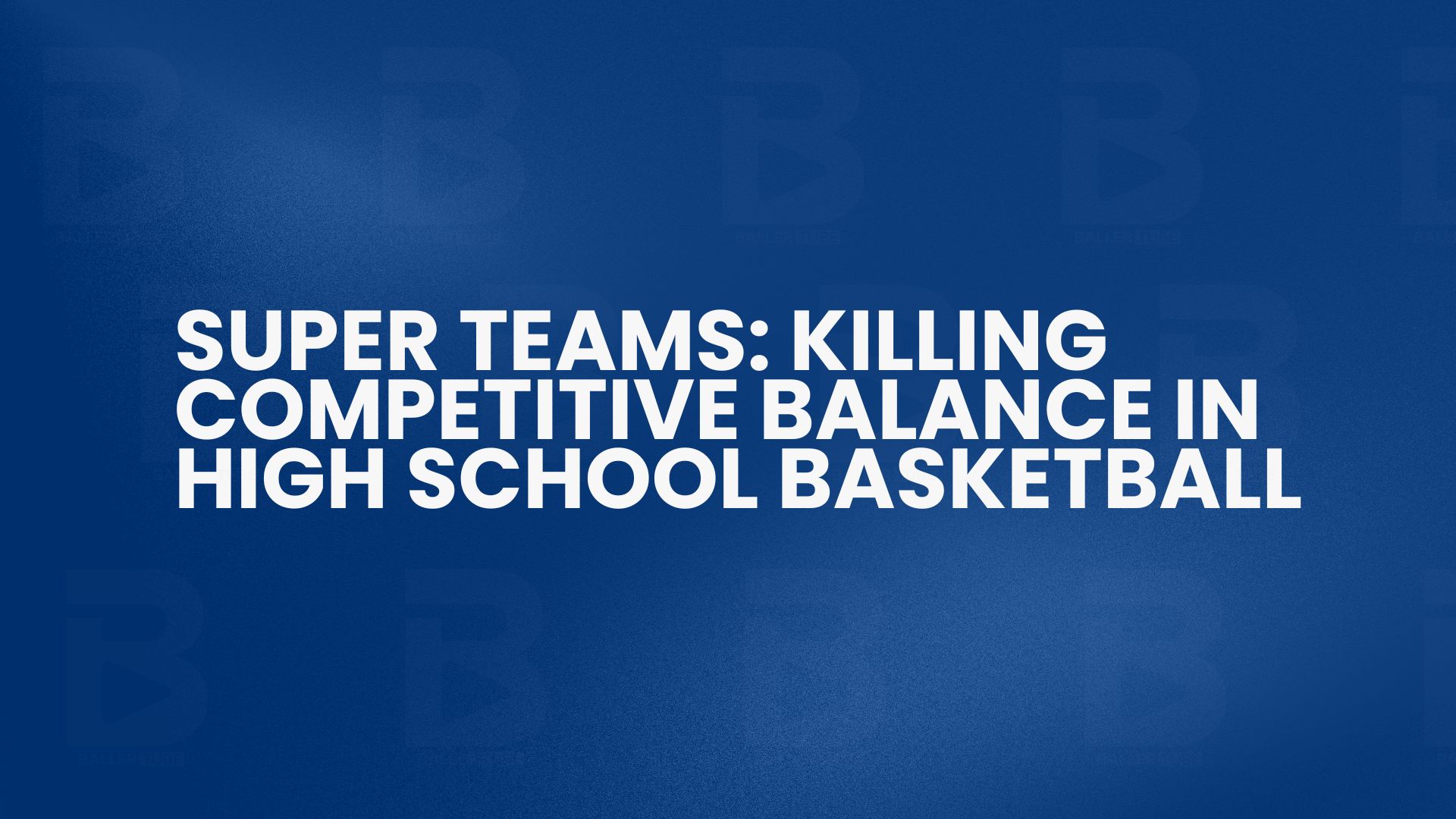Throughout the years, the advancement of “super teams” has changed the high school basketball landscape changing it from a regional proving ground into a national race. Years ago the best players grew up and stayed in their precincts, representing local schools and creating serious rivalries. At this moment in time, elite players are increasingly transferring to national prep programs or loading up public and charter schools with talent that makes competitive balance look ridiculously bad.
Drawing up the Super Team
The outbreak of social media exposure, grassroots basketball, and college recruitment methods, players as young as 13 are now choosing schools based not on academics or landscape but on what player is on the roster and how much national awareness they can acquire. This new era of basketball has built rosters loaded with Division I talent, building a power imbalance so great that many games are over before tip-off.
Schools like Prolific Prep (CA), Dream City Christian (AZ), Montverde Academy (FL), and AZ Compass (AZ) (to name a few) are not just high school teams they’re channels to the pros. These schools have become attractions for elite talent, and they aren’t alone. Even public schools (Millennium (AZ) with open enrollment procedures or strategic transferring are fielding lineups that look identical to AAU All-Star team.
Top recruits get to play with other elite players, gaining national attention, and facing high-level competition. Now for the average high school program, the consequences are harsh. Talented players are few. Long-standing programs struggle to contend. Coaches face stress not just to develop athletes, but to recruit and keep them.
“You can’t build a program anymore,” says one veteran coach from Phoenix. “You build it, and a kid drops 20 a game, then boom—he’s gone next year to a prep school across the state.”
Final Sound
There’s nothing wrong with skill. There’s nothing wrong with purpose. But when 90% of the skill ends up in 10% of the programs, basketball suffers at the grassroots level. Rivalries fade away, neighborhood dignity becomes low, and the dreams of the everyday player get shoved aside. If the destination is to deepen basketball for everyone, then high school basketball needs to ask itself a difficult question: How do we bring harmony back before the competitive spirit becomes a loss of fame-chasing?






 King Solomon (Age 6) Plays Up with 2nd Grade SOH Elite | Future Star in the Making
King Solomon (Age 6) Plays Up with 2nd Grade SOH Elite | Future Star in the Making

















